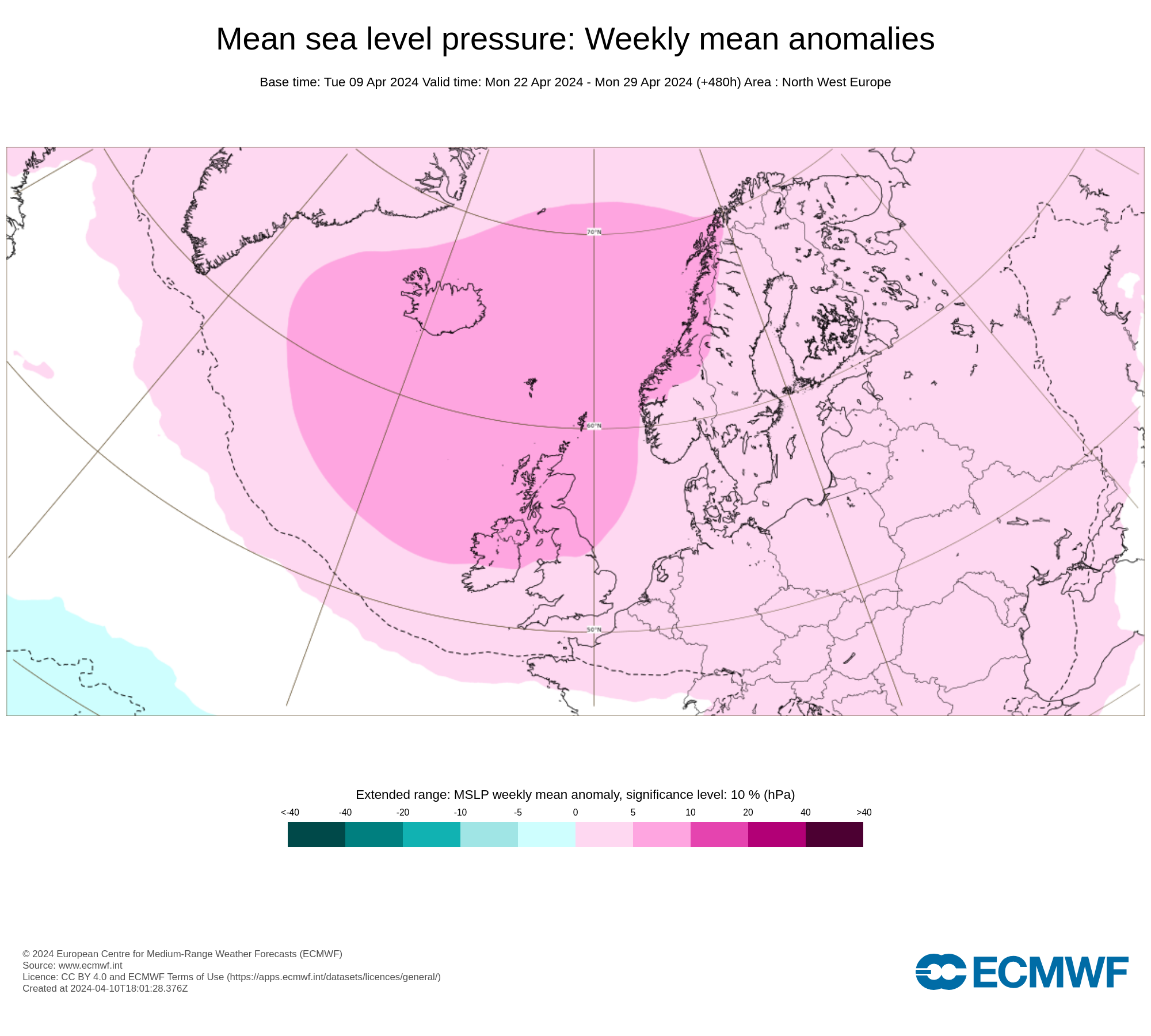Did you have a headache over the weekend? can high atmospheric pressure cause headaches
Over the last 2 days a very powerful area of high pressure positioned itself to the northwest of Ireland with some of the highest pressure readings seen in nearly 60 years in Ireland. Many people may have seen a increase in headaches and migraines due to pressure readings reaching 1040hPa on Saturday with a very sharp rise on Sunday morning of up to 1050hPa.
the highest pressure ever recorded in Ireland which was recorded 28 January 1905, Valentia Island, Co.Kerry 1051.9 hPa.
The Lowest ever pressure recorded in Ireland was on 28 November 1838, Limerick 931.2 hPa.
A new record has been broken this Sunday morning for March in Donegal. The all time monthly air pressure record for March has been smashed this morning in many places with the previous recorded for the month recorded back in the year of 1900 on the 13th of March at Valentia, Kerry with a pressure reading of 1047.1hPa. The new record this morning has been recorded at Malin head Donegal of 1050hPa and this will undergo a quality control check at the Met Eireann stations which will the exact reading which will be over the 1050hPa reading as pressure still continues to rise at the station as well as other this morning.
The all time monthly air pressure record for March has been smashed this morning in many places with the previous recorded for the month recorded back in the year of 1900 on the 13th of March at Valentia, Kerry with a pressure reading of 1047.1hPa. The new record this morning has been recorded at Malin head Donegal of 1050hPa and this will undergo a quality control check at the Met Eireann stations which will the exact reading which will be over the 1050hPa reading as pressure still continues to rise at the station as well as other this morning.
Study on barometric or pressure headaches or migraines.
Researchers have still to prove a definitive link between the weather and headaches or migraines. According to the American Migraine Foundation, however, more than a third of people with migraines claim that weather patterns trigger their headaches, at least some of the time.
Several studies have found evidence that weather, and especially changes in pressure, increase the likelihood of headaches and migraines occurring. In fact, a 2017 study demonstrated a positive association between the atmospheric pressure and the amount of migraine pain a person experiences.
Weather changes almost inevitably cause variations in atmospheric pressure. So, headaches or migraines that are caused by or affected by changes in the weather are often called barometric or pressure headaches or migraines.
Facts on barometric pressure headaches:
Barometric pressure is the force put on our bodies by the air around us.
Most symptoms are the same or similar to those of all headaches and migraines.
Medications used for treatments are the same as those used for other headaches and migraines.
There is usually no way to control or avoid weather and pressure changes.
Information from the NHS
If you're prone to getting headaches, you could find that grey skies, high humidity, rising temperatures and storms can all bring on head pain.
Pressure changes that cause weather changes are thought to trigger chemical and electrical changes in the brain. This irritates nerves, leading to a headache.
How to fix it: There’s not much you can do to change the weather. However, by looking at the forecast, you can predict when you’re likely to have a headache and take a preventative painkiller a day or two in advance.
For some people, weather changes immediately trigger headache and migraine symptoms, while for others it takes time for these to set in. Some people may also anticipate or sense weather changes well before they happen.
Common symptoms of barometric pressure headaches and migraines include:
continual head pain that lasts between 4 hours and 3 days
sensitivity to light, sounds, and smells
nausea, abdominal pain, and vomiting
distorted vision
numbness in the face and neck
pressure or tightness anywhere in the face and neck region
mood or emotional changes, often depressive or anxious
dizziness or light-headedness
increased need to urinate
more frequent yawning
slurred speech or thick tongue
memory difficulties
aura or the appearance of a ring of light or energy around objects
difficulty concentrating and sleeping
craving for specific foods
continues below
Causes
Researchers think that changes in atmospheric pressure cause a pressure difference between the sinus cavities, the structures and chambers of the inner ear, and the outside world.
Depending on how quickly they occur and their intensity, these pressure changes can cause persistent pain, especially in small, confined, air-filled systems, such as the sinus and ear chambers.
Increasing external pressure may also cause blood vessels to dilate and abnormal blood flow to the brain, increasing the risk of a headache or a migraine.
In general, people with migraines and headache disorders tend to have overactive nervous systems, as well.
Atmospheric and weather changes associated with headaches include:
sudden increases in temperature or humidity
sudden drops in temperature or humidity
very high or low temperature or humidity
most storm systems
strong wind systems
changes in altitude
While weather change is considered a trigger for migraines, the accompanying pressure changes may not be enough on their own to spark a migraine unless they are dramatic or sudden.
Click on the tabs below to view the new forecasts available under the forecast section.
2019 CALENDAR NOW ON SALE





























